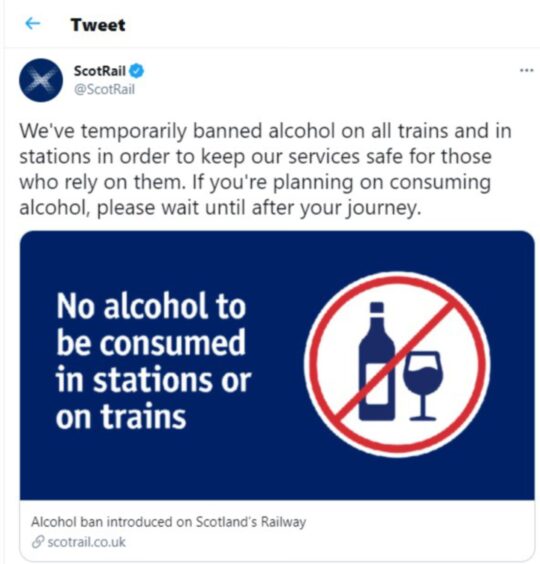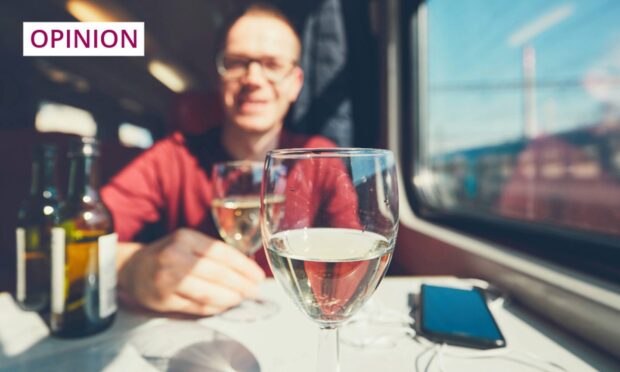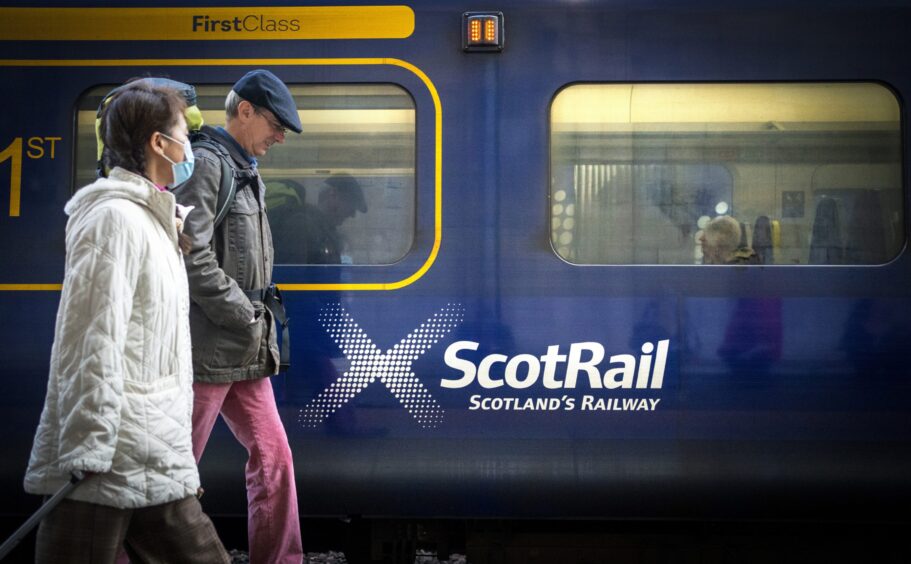I remember the first time I witnessed someone blootered on a train.
I use the word ‘blootered’ because they weren’t just drunk. They were hammered.
Legless, bleezin’, bladdered and plastered; completely incapable of looking after themselves, rolling among the suitcases, making groaning, grunting and whistling noises.
They were also aggressive.
After increasing the levels of intimidation toward other passengers, they attacked a female passenger, causing another punter to intervene.
The train conductor then barrelled up the aisle and handled things about as well as one could in a situation like that.
They were then physically and literally sat on until they were removed by British Transport Police at the first available opportunity in Kirkcaldy.
Good riddance, the carriage being returned to relative peace.
This, of course, is not indicative of everyone who takes a drink on a train.
This was a specific man who had far too many while having far too little to do on a train from London to Aberdeen, but the experience has stayed with me.
The majority of drunk folk on trains are fine
I’ve seen folk drunk on trains many times and the majority are fine.
Often they are generous, both with their humour and sometimes their booze, and most know their limit.
Occasionally they’ll provide raucous entertainment.
I’ll never forget a chap who was smoking on the train, whilst talking to his pal on the phone. On spotting the police at the station at Dundee he announced to his mate, ‘Oh, the bobbies are here to take someone off’.
He was oxtered up and weeched away before he could finish the sentence.
Or a drunk bloke who, upon crossing the Tay Bridge approaching Dundee, looking down on the silvery water, stood up and roared, ‘OH MY GOD, I’VE MISSED MY STOP’.
On the quiet coach, no less. I presume he eventually made it back to the Kingdom of Fife.
As ever it’s the few who ruin it for the many who know how to behave, and who leave a delicate argument as Scotrail considers whether to lift an alcohol ban on trains that was started during the pandemic, as a way to protect both customers and staff.

Now, I’ll admit that pre-pandemic I enjoyed a beer or two on the train myself.
It was not unusual for me to roll into Aberdeen station feeling slightly tipsy after a work day in Edinburgh – the dangers of entering a train parched, pre-dinner.
But the lack of alcohol on trains appears to have reduced misbehaviours.
Journeys feel quieter and more peaceful, although that could be equally down to reduced passenger numbers.
The other week Scotrail fed back to the Scottish Parliament that the public is about 50/50 on whether alcohol should be reintroduced, akin to how I feel myself.
But, at the end of the day a safer environment while we travel probably wins out, and pushes me into the ‘keep the ban’ camp.
I can always have a beer when I get home.
Transport Scotland recommends not only continuing the booze ban on trains, but strengthening it
Transport Scotland’s report on women’s safety on public transport from last year directly recommended not only continuing rules around the banning of alcohol but strengthening them, illustrating that alcohol makes issues already present in our society much worse.
They call for better enforcement of the current legislation and increased fines; it’s true – some people do ignore the rules, and a lack of staff presence on trains makes it hard to combat drunks, particularly in groups.
There’s also the issue of wider anti-social behaviour in our public spaces right now, which to many appears to be increasing. Why add more booze into that mix?
You can’t ignore these considerations, and whether it is only a handful of people causing the issue or not, it’s true that a significant amount of travellers, particularly those already vulnerable, feel far better about using the train if the risk of running into intoxicated and aggressive people is lower.
Although many might have seen the pandemic measure to stop serving and permitting drinking on trains as a temporary measure, it can only make sense to continue to build on good habits. We’ll end up with a healthier and safer society as a result.
Whilst the economic benefits of allowing a handful of cans back on the train are being touted by the people best positioned to directly benefit, don’t forget the benefit of keeping the ban in place – less waste of police time; better health; more accessible train services.
Colin Farquhar works as a creative spaces manager and film programmer in the north-east culture sector












Conversation